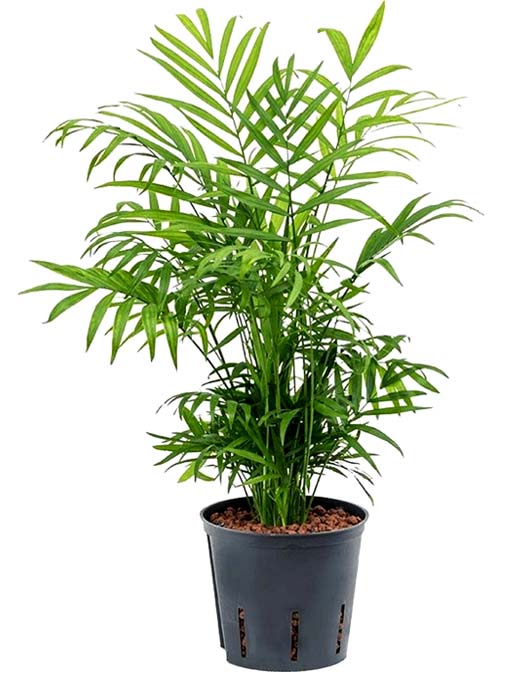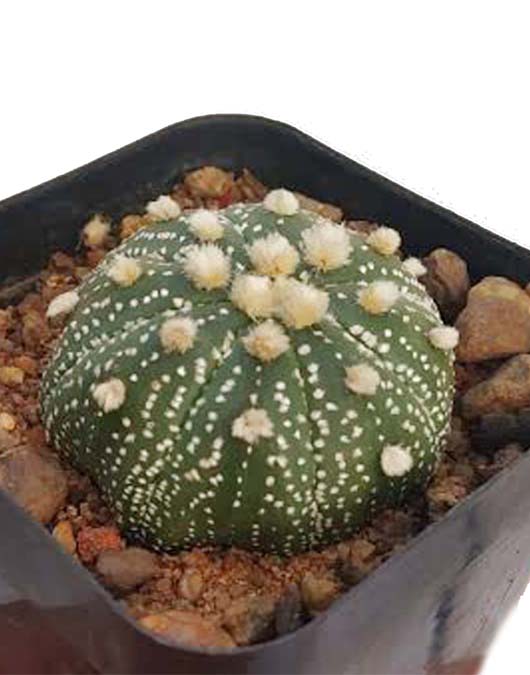- According to Feng Shui experts, Pachira Aquatica attracts wealth and good fortune when it is placed at the right place in your home. For improving your financial prosperity, you must place it in the Southeast area at your home or office.
- Pachira Aquatica is known as the best air-purifying plant, and it absorbs the toxic components present in the air. It purifies the air and makes your home a safe place for you and your family.
- The Money Tree is a pet-friendly indoor plant. You can bring it home and stay assured that your pets are safe at all times.
- Adorned with beautiful braids, the Money tree looks aesthetically pleasing and will make for a spectacular addition to your home decor.
- The Money Tree loves damp soil. If you are always confused about the suitable amount of water for indoor plants, then Money Tree is made for you. It is highly low-maintenance, and over-watering won’t kill it.
- Our fortune tree needs no pruning at all. If you wish to give it a specific shape, then you can cut the leaves. It can easily survive without pruning.
- The Pachira Aquatica has a perfect size. You can easily keep it indoors as it grows according to the pot it is placed in.
Out Of Stock
EtonGreen Graptoveria Bashful Live Succulent Plant
- Graptoveria, is a cross between Echeveria and Graptopetalum, two outstanding succulents. Graptoveria ‘Bashful’ is just as delightful with its blushing appeal. Try growing Bashful Graptoveria in combination with other succulents for a vacation-friendly blend of interesting houseplants.
- Graptoveria ‘Bashful.’ This ground-hugging rosette form is an easy-to-grow, low-maintenance plant that stands in for a flower with its form and color.
- Water needs only moderate watering when Established Keep in direct sun, water in morning, and water only when soil is fully dry
- Plant Will Be given with free Plastic Pot
- Also known as flapjack paddle plant. this succulent kalanchoe plant has with thick, rounded, paddle-shaped leaves.
- The plant is also known as Red pancake because the leaves frequently take on a reddish or deep pink tint during the winter.
- Water needs only moderate watering when established Keep in direct sun, water in morning, and water only when soil is fully dry
- When watering indoor plants, allow the pot to drain completely before replacing the plant on its drainage saucer. Never over water, as kalanchoe, like all succulents, is prone to rot in soggy soil.
- Plant will be given With Free Plastic Pot
- The Parlour Palm was popular with the Victorians and remains a firm favourite. An elegant plant, easy to look after, with excellent air purifying qualities. They are undemanding in terms of light, water, temperature, humidity and feed, making them perfect for those of us that like low-maintenance room-mates.
- Chamaedorea elegans has bright green leaves on slender, arching stems. The leaves are pinnate, meaning it has feathered leaflets arranged on either side of the stem. With the Parlour Palm, these leaflets form opposite pairs and there can be as many as 40 leaflets on each leaf. Small yellow flowers appear on mature plants if they have sufficient light. Chamaedorea elegans also has the Latin name Neanthe bella. Its common names are Parlour Palm and Dwarf Mountain Palm.
- Common Name : Parlor Palm, Neanthe bella palm Botanical Name : Chamaedorea elegans
- Among all the palm trees, parlor palms are a great place to start for the beginner.
- Plant Will Be Given With Free Plastic Pot
- Chinese fan palms (Livistona chinensis) are popular landscape plants in warm,
- Chinese fan palms (Livistona chinensis) are popular landscape plants. These palms are also known by the common name fountain palm due to the way their fronds arch up and then spill downward like water from a fountain. Each frond can grow 40 to 60 inches long.
- Indoors in a container, It can grow 6-7 feet tall and will add beautiful full, green look to your home.
- You can place Chinese palm in living rooms, hallways, bedrooms, offices, conference rooms, or anywhere with plenty of light. If you place against walls such as room corners, rotate container so all of the foliage gets even light.
- Plant Will Be Given With Free Plastic Pot
- Bring life into dull, empty corners with one of the prettiest houseplants, the Rubber Plant Variegated. Its leaves display stunning variegations in shades of cream, pink and green with red midribs. An air purifier that is as stunning as it gets and thrives with little care is an excellent addition to your space.
- It is a popular ornamental plant from the Ficus genus.
- If you are new to keeping houseplants, variegated rubber plants are generally hardy.
- Ficus elastica variegata (FYE-kuss ee-LASS-tick-uh), known as the variegated rubber plant, has pink splashes throughout its otherwise white and green leaves.
- Variegated Rubber Trees differ from regular rubber trees in their leaf color. Traditional rubber trees have dark green leaves but variegated rubber trees have leaves with shades of red, yellow, cream and green.
- Variegated Rubber Trees like well lit spots with indirect sunlight.
- Avoid direct sunlight, it burns the leaves of the Variegated Rubber Tree.
- Do not place a Variegated Rubber Tree in shade, it will lose the variegated markings.
- If the Variegated Rubber Tree leaves begin dropping or losing color, it needs more light.
- Aloe vera is a succulent plant species of the genus Aloe. The plant is stemless or very short-stemmed with thick, greenish, fleshy leaves that fan out from the plant’s central stem. The margin of the leaf is serrated with small teeth.
- Before you buy an aloe, note that you’ll need a location that offers bright, indirect sunlight (or artificial sunlight). Direct sunlight can dry out the plant too much and turn its fleshy leaves yellow, so you may need to water more often if your aloe lives in an especially sunny spot.
- Aloe vera plants are succulents, so use a well-draining potting mix, such as those made for cacti and succulents. Do not use gardening soil. A good mix should contain perlite, lava rock, chunks of bark, or all three.
- Water aloe vera plants deeply, but infrequently. In other words, the soil should feel moist after watering, but should be allowed to dry out to some extent before you water again. If the soil stays overly wet, the plant’s roots can rot.
- Mature aloe vera plants occasionally produce a tall flower spike—called an inflorescence—from which dozens of tubular yellow or red blossoms appear. This certainly adds another level of interest to the already lovely aloe!
- Astrophytum asterias Is Rare cactus Plant
- Astrophytum asterias is a small, spineless cactus with a stem that grows up to 2.4 inches (6 cm) tall and up to 6 inches (15 cm) in diameter.
- Astrophytum asterias is a species of cactus in the genus Astrophytum, and is native to small parts of Texas in the United States and Mexico. Common names include sand dollar cactus, sea urchin cactus, star cactus and star peyote.
- The flowers of this cactus are yellow with red bases and the outer parts are very woolly. Green to pink oval fruits are produced; the outside coat is covered with woolly hairs.
- Give Astrophytum cacti plenty of sunlight—at least 6 hours per day if growing outdoors.
- Like most cacti, these species need well-drained, fairly sandy soil and will likely perish in rich soils that retain moisture.
















